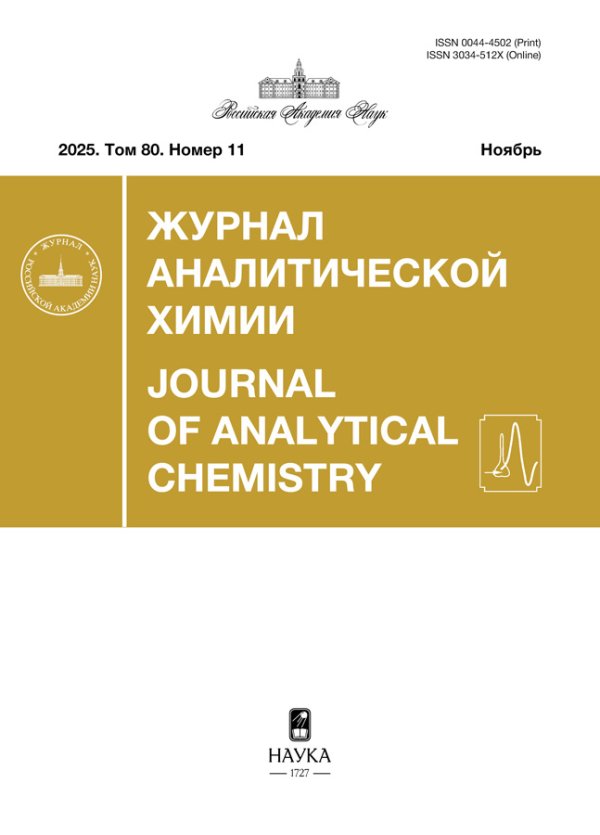Обнаружение метаболитов нового синтетического каннабиноида MDMB-4en-PINACA в моче человека методами жидкостной и газовой хромато-масс-спектрометрии
- Авторы: Николаев И.В.1, Байкова А.М.1, Галеева Е.Х.1, Григорьев А.М.2
-
Учреждения:
- Республиканский наркологический диспансер № 1
- Министерство обороны Российской Федерации
- Выпуск: Том 80, № 2 (2025)
- Страницы: 201-216
- Раздел: ОРИГИНАЛЬНЫЕ СТАТЬИ
- Статья получена: 13.06.2025
- URL: https://vestnik.nvsu.ru/0044-4502/article/view/684156
- DOI: https://doi.org/10.31857/S0044450225020099
- EDN: https://elibrary.ru/aemkmq
- ID: 684156
Цитировать
Полный текст
Аннотация
MDMB-4en-PINACA относится к новым синтетическим психоактивным соединениям, получившим распространение на территории России, по крайней мере с 2020 г., и обладает высокой активностью по отношению к каннабиноидному рецептору человека CB1. Его отличительной особенностью является присутствие редкого для этой группы соединений N-пентенового остатка. Значительная гидрофобность MDMB-4en-PINACA, как и большинства других синтетических, распространяемых на мировых рынках каннабимиметиков, обусловливает практически полную биотрансформацию исходного соединения и крайне низкое содержание его в моче. Отсюда следует необходимость выявления его метаболитов, обнаружение которых свидетельствовало бы об употреблении MDMB-4en-PINACA. Для решения этой задачи использовали методы газовой и жидкостной хромато-масс-спектрометрии, включая высокоэффективную хромато-масс-спектрометрию с квадруполь-времяпролетным детектором и детектором типа трехмерная ионная ловушка, оснащенными источником электрораспылительной ионизации. Выявлен ряд предполагаемых метаболитов MDMB-4en-PINACA в моче человека, идентифицированых как продукты гидролиза, моно- и дигидроксилирования, восстановления, образования дигидродиола, карбоксилирования, карбоксилирования с элиминированием метиленовой группы, N-дезалкилирования и комбинаций этих процессов. Ряд метаболитов найден в форме глюкуронидов. Полученные результаты хорошо согласуются с литературными данными. Для рутинного химико-токсикологического и судебно-химического анализа мочи методом газовой хромато-масс-спектрометрии оптимальным является поиск продуктов гидролиза, дигидроксилирования и образования дигидродиола, в то время как при использовании жидкостной хромато-масс-спектрометрии также рекомендуется обнаружение глюкуронидов продуктов гидролиза и образования дигидродиола.
Ключевые слова
Полный текст
Об авторах
И. В. Николаев
Республиканский наркологический диспансер № 1
Email: chrzond4250@yandex.ru
Россия, ул. Пушкина, 119, Уфа, 450057
А. М. Байкова
Республиканский наркологический диспансер № 1
Email: chrzond4250@yandex.ru
Россия, ул. Пушкина, 119, Уфа, 450057
Е. Х. Галеева
Республиканский наркологический диспансер № 1
Email: chrzond4250@yandex.ru
Россия, ул. Пушкина, 119, Уфа, 450057
А. М. Григорьев
Министерство обороны Российской Федерации
Автор, ответственный за переписку.
Email: chrzond4250@yandex.ru
“27 Научный центр им. Н.Д. Зелинского”
Россия, пр-д Энтузиастов, 19, МоскваСписок литературы
- The cannabinoid receptors / Ed. Reggio P.H. New York: Humana Press, 2009. 396 p.
- Mustata C., Torrens M., Pardo R., The Psychonaut web mapping group, Farre, M. Spice drugs: cannabinoids as a new designer drugs // Adicciones. 2009. V. 21. № 3. P. 181.
- European Drug Report 2023: Trends and Developments. European Monitoring Centre for Drugs and Drug Addiction (EMCDDA), 2022. https://www.emcdda.europa.eu/publications/edr/trends-developments/2022_en (дата обращения 20.05.2024).
- Assi S., Marshall D., Bersani F.S., Corazza O. Uses, effects and toxicity of synthetic cannabinoids from the perspective of people with lived experiences // J. Psychoactive Drugs. 2020. V. 52. № 3. P. 237. https://doi.org/10.1080/02791072.2020.1723748
- Giorgetti A., Busardò F.P., Tittarelli R., Auwärter V., Giorgetti R. Post-mortem toxicology: A systematic review of death cases involving synthetic cannabinoid receptor agonists // Front. Psychiatry. 2020. V. 11. P. 464. https://doi.org/10.3389/fpsyt.2020.00464
- European Monitoring Centre for Drugs and Drug Addiction (EMCDDA) initial report on the new psychoactive substance methyl 3,3-dimethyl-2-(1-(pent-4-enyl)-1H-indazole-3-carboxamido)butanoate (MDMB-4en-PINACA). Luxembourg: Publications Office of the European Union, 2020. https://www.emcdda.europa.eu/system/files/publications/13363/emcdda-initial-report-MDMB-4en-PINACA.pdf (дата обращения 20.05.2024).
- World Health Organization. Critical Review Report: MDMB-4en-PINACA. Geneva, 2020. https://www.who.int/docs/default-source/controlled-substances/43rd-ecdd/mdmb-4en-pinaca-review-2020.pdf?sfvrsn=5cd6e97e_4 (дата обращения 20.05.2024).
- Norman C., Walker G., McKirdy B., McDonald C., Fletcher D., Antonides L.H. et al. Detection and quantitation of synthetic cannabinoid receptor agonists in infused papers from prisons in a constantly evolving illicit market // Drug Test. Anal. 2020. V. 12. № 4. P. 538. https://doi.org/10.1002/dta.2767
- Krotulski A.J., Cannaert A., Stove C., Logan B.L. The next generation of synthetic cannabinoids: Detection, activity, and potential toxicity of pent‐4en and but‐3en analogues including MDMB‐4en‐PINACA // Drug Test. Anal. 2021. V. 13. № 2. P. 427. https://doi.org/10.1002/dta.2935
- Diao X., Huestis M.A. Approaches, challenges and advances in metabolism of new synthetic cannabinoids and identification of optimal urinary marker metabolites // Clin. Pharmacol. Ther. 2017. V. 101. № 2. P. 239. https://doi.org/10.1002/cpt.534
- Leong H.S., Watanabe S., Kuzhiumparambil U., Fong C.Y., Moy H.Y., Yao Y.J. et al. Monitoring metabolism of synthetic cannabinoid 4F-MDMB-BINACA via high-resolution mass spectrometry assessed in cultured hepatoma cell line, fungus, liver microsomes and confirmed using urine samples // Forensic Toxicol. 2021. V. 39. P. 198. https://doi.org/10.1007/s11419-020-00562-7
- Franz F., Jechle H., Wilde M., Angerer V., Huppertz L.M., Longworth M. et al. Structure-metabolism relationships of valine and tert-leucine-derived synthetic cannabinoid receptor agonists: a systematic comparison of the in vitro phase I metabolism using pooled human liver microsomes and high-resolution mass spectrometry // Forensic Toxicol. 2019. V. 37. P. 316. https://doi.org/10.1007/s1141 9-018-00462–x
- Jang M., Yang W., Choi H., Chang H., Lee S., Kim E., Chung H. Monitoring of urinary metabolites of JWH-018 and JWH-073 in legal cases // Forensic Sci. Int. 2013. V. 231. P. 13. https://doi.org/10.1016/j.forsciint.2013.03.053
- Mogler L., Franz F., Wilde M., Huppertz L.M., Halter S., Angerer V. et al. Phase I metabolism of the carbazole-derived synthetic cannabinoids EG-018, EG-2201, and MDMB-CHMCZCA and detection in human urine samples // Drug Test. Anal. 2018. V. 10. № 9. P. 1417. https://doi.org/10.1016/10.1002/dta.2398
- Григорьев А.М., Крупина Н.А., Никитин Е.В., Грибкова С.Е., Калашников В.А. Выявление метаболитов нового синтетического каннабиноида MMB-022 в моделях in vivo и in vitro методом жидкостной хромато-масс-спектрометрии // Масс-спектрометрия. 2020. Т. 17. № 3. С. 151. https://doi.org/10.25703/MS.2020.17.33
- Watanabe S., Wu X., Dahlen J., Konradsson P., Vikingsson S., Kronstrand R., Gréen H. Metabolism of MMB022 and identification of dihydrodiol formation in vitro using synthesised standards // Drug Test. Anal. 2020. V. 12. № 10. P. 1432. https://doi.org/10.1002/dta.2888
- Watanabe S., Vikingsson S., Åstrand A., Gréen H., Kronstrand R. Biotransformation of the New synthetic cannabinoid with an alkene, MDMB-4en-PINACA, by human hepatocytes, human liver microsomes, and human urine and blood // AAPS J. 2019. V. 22. № 1. P. 13. https://doi.org/10.1208/s12248-019-0381-3
- Ozturk Y.E., Yeter O. In vitro phase i metabolism of the recently emerged synthetic MDMB-4en-PINACA and its detection in human urine samples // J. Anal. Toxicol. 2020. V. 44. № 9. P. 976. https://doi.org/10.1093/jat/bkaa017
- Liying Z., Min S., Baohua S., Hang C., Xin W., Hongxiao D. et al. Application of a UPLC-MS/MS method for quantitative analysis of 29 synthetic cannabinoids and their metabolites, such as ADB-BUTINACA and MDMB-4en-PINACA in human hair in real cases // Forensic Sci. Int. 2022. V. 331. Article 111139. https://doi.org/10.1016/j.forsciint.2021.111139
- Kronstrand R., Norman C., Vikingsson S., Biemans A., Crespo B.V., Edwards D. et al. The metabolism of the synthetic cannabinoids ADB-BUTINACA and ADB-4en-PINACA and their detection in forensic toxicology casework and infused papers seized in prisons // Drug Test. Anal. 2022. V. 14. № 4. P. 634. https://doi.org/10.1002/dta.3203
- March R.E. An introduction to quadrupole ion trap mass spectrometry // J. Mass Spectrom. 1997. V. 32. № 4. P. 351.
- Bruker Daltonics Toxtyper™ 2012. https://www.bruker.com/en/products-and-solutions/mass-spectrometry/ms-solutions/toxtyper.html (дата обращения 20.05.2024).
- Wissenbach D.K., Meyer M.R., Remane D., Philipp A.A., Weber A.A., Maurer H.H. Drugs of abuse screening in urine as part of a metabolite-based LC-MSn screening concept // Anal. Bioanal. Chem. 2011. V. 400. № 10. P. 3481. https://doi.org/10.1007/s00216-010-4398-9
- Граник В.Г. Метаболизм экзогенных соединений. Лекарственные средства и другие ксенобиотики. М.: Вузовская книга, 2015. 526 с.
Дополнительные файлы















